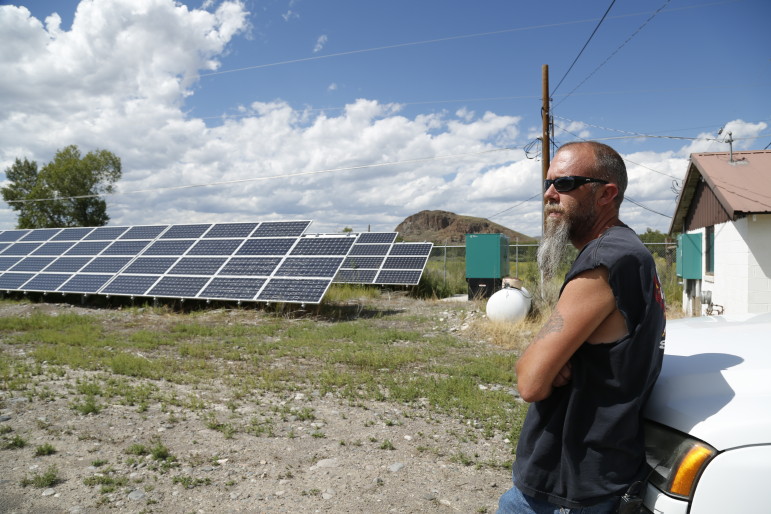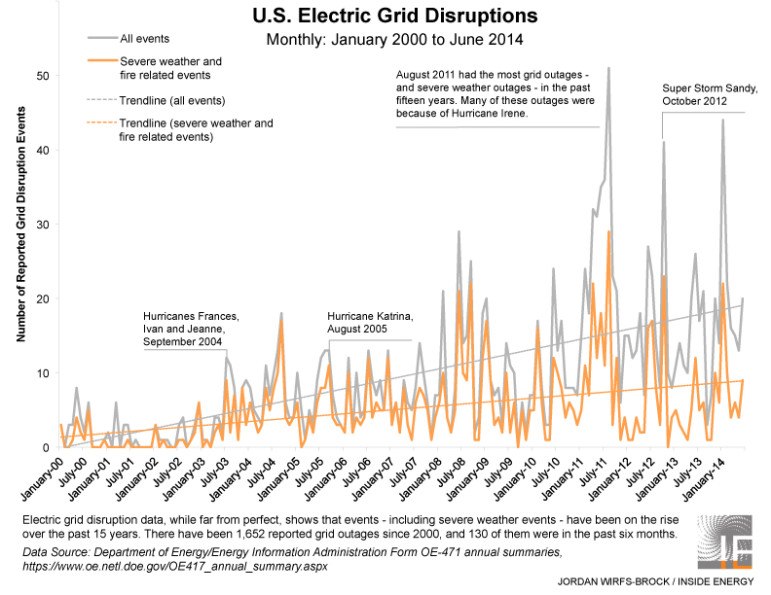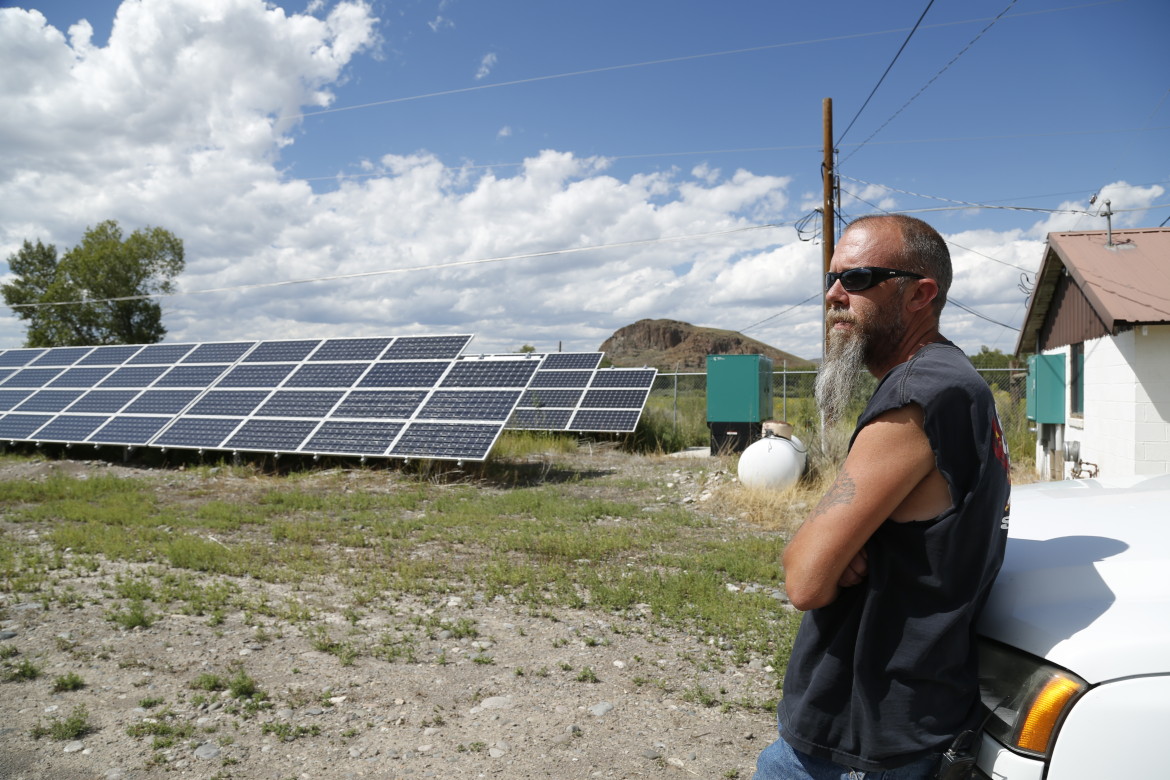
Dan Boyce / Inside Energy
In Del Norte, CO, the Public Works Supervisor Kevin Larimore shows off an array of solar panels that provide electricity for the town’s water supply.
This week, Inside Energy is exploring how solar power is changing the way electricity is delivered in the U.S. See the full series here.
The small and sunny town of Del Norte, and most of southwestern Colorado’s San Luis Valley, is served by one major power line. It comes in the valley through stretches of the Rio Grande National Forest, where long periods of drought and spruce beetle infestations have led to significantly higher fire danger in the last 15 years. Del Norte is the example of a community at risk, and one that needs to find creative solutions to a possible grid disaster.
“If that line was to go down, then most of the valley I think would lose electrical power,” said Del Norte Public Works Supervisor Kevin Larimore.
He was standing among a field of solar panels which help power the city’s water supply. Del Norte also has solar installed outside the town hall, the town general store, and on top of the police department. The city uses the solar panels to lower municipal electric bills. Ironically, what they can’t be used for is what may be most needed: a backup power supply when electricity is cut off.
Del Norte’s solar panels work in the same way the vast majority of solar works in this country: If the outside power supply is cut off, the panels become instantly lifeless.
This solar power conundrum came into sharp focus nearly two years ago when Hurricane Sandy thrashed the east coast, causing widespread blackouts that sometimes lasted for weeks. James Newcomb, Managing Director of the Rocky Mountain Institute, said while New Jersey has hundreds of megawatts of solar power, power rendered useless because of perhaps antiquated connections to the larger power grid.
Inside Energy Data Journalist Jordan Wirfs-Brock created the graph below which shows the monthly average of power outages has increased six-fold in the last fifteen years, in part because of a rise in severe weather events:

Jordan compiled all of this data for the first time, check out the full database right here.
Newcomb said the grid has been set up the way it has for a reason–for safety. Safety, in this case, for the workers who may need to fix a power line.
“So we typically have built the grid and operate it as one big system,” he said, and if a team of workers is out fixing power lines after a blackout, the lines need to be dead. There can’t be a bunch of solar energy running up the wires the wrong way.
It is possible to change that system, though, with the implementation of microgrids.
“This transition…is one that makes it possible to operate some small pieces of the grid independently,” said Newcomb.
Microgrids are created using what are called smart inverters, which can sense when the larger grid has gone down, lock off the part that needs to be fixed, and power the rest with whatever resources the town has available, whether it’s generators or the country’s quickly growing fleet of solar panels.
Community microgrids are still rare, but the technology is advancing. Politico’s Morning Energy recently reported a Vermont electric company called Green Mountain Power has started construction on a $10 million dollar system it’s billing as the first microgrid powered solely by solar panels and batteries.
Del Norte officials say they didn’t know about these smart inverters when installing their solar systems a few years ago. As it stands, the town has a diesel generator to power at least the town’s water supply in case of a blackout. But Kevin Larimore thinks a microgrid could be pretty convenient, especially for him. His house is hooked up to the same power line as the solar at town hall.








